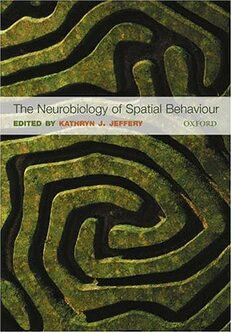
The Neurobiology of Spatial Behaviour PDF
351 Pages·2003·3.739 MB·English
Most books are stored in the elastic cloud where traffic is expensive. For this reason, we have a limit on daily download.
Preview The Neurobiology of Spatial Behaviour
Description:
This book explores the relationship between cellular processes and animal behavior. It does this by focusing on the domain of navigation, bringing together scientists from either side of the brain-behavior divide in an attempt to explain the linkage between spatial behavior and the underlying activity of neurons.The Neurobiology of Spatial Behaviour is organized into two sections. Section one deals with the so-called "higher" levels of description - studies of spatial behavior and the brain areas that might underlie such behavior. The section begins with insects, remarkably sophisticated navigators, and ends with humans, examining along the way issues such as whether animal brains contain maps and whether spatial and non-spatial information interact, and if so, how? Section two delves further into the brain and focuses on the mammalian representations of space and the role of place cells.These issues have far wider ramifications that simply helping us to understand the process of navigation. This system might provide a model for how other forms of knowledge, beliefs and intentions are encoded in neurons. As such, the book will be of interest to an interdisciplinary audience, including ethologists, psychologists, behavioral neuroscientists, computational modelers, physiological neuroscientists and molecular biologists.
See more
The list of books you might like
Most books are stored in the elastic cloud where traffic is expensive. For this reason, we have a limit on daily download.
